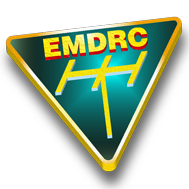Around Paris 2018
In August 2018 we had a chance to visit Paris and despite the best laid plans I did manage to grab a couple of shots on our travels. We had a lot to fit into the schedule but I thought these two sites might be something that interests readers albeit that description, even in French were quite limited or non-existent.
The Musée des arts et métiers
Founded in 1794 by Henri Grégoire, the Conservatoire national des arts et métiers, “a store of new and useful inventions,” is a museum of technological innovation. The Musée des arts et métiers was refurbished in 2000, and now exhibits over 2,400 inventions. They are split into seven collections Scientific instruments, Materials, Energy, Mechanics, Construction, Communication and Transport. More is available at https://www.arts-et-metiers.net/musee/visitor-information
Entry is 8 Euro – Currently $1.6 Euro – or if you think you will visit several museums, then buy a pass and jump any queues in many cases. The best way to get a pass is first decide how many days you want. We visited several Paris museums and then Versailles and Reims sites – all included in the pass, saving a couple of hundred dollars all up. Mind you, we visited many more to ensure value was achieved… say no more! Secondly, buy one from a smaller, and quieter museum – or some tabacs.
It is nice to be able to walk past long queues. But mindful at some places like the Louvre you may be faced with surges in numbers at times. When we visited the Louvre, the general and pass lines were equal so they will spread the load at times. We weren’t going to line up there so knew there is another entry to the north where you can come in via the underground shopping centre. Beware, that you can get in quickly that way but if you don’t have a pass already, you line up again for a ticket.
Note, most places required a bag search and commonly an xray. So for those toolies out there, no sharps – and that includes corkscrews, leather-man type tools etc etc.
One museum of interest was the Museum of metiers (‘trades’) [and perhaps hence the old English question of ‘what’s your meat’ (‘met’) when asking about what someone does for a living.] The blurb says that this is your chance to follow in the footsteps of inventors and pioneers of progress and explore a one-of-a-kind repository of scientific and technical knowledge… For more, visit https://www.arts-et-metiers.net/musee/visitor-information
 Founded in 1794 by Henri Grégoire, the Conservatoire national des arts et métiers, “a store of new and useful inventions,” is a museum of technological innovation. The Musée was refurbished in 2000, and now exhibits over 2,400 inventions. They are split into seven collections Scientific instruments, Materials, Energy, Mechanics, Construction, Communication and Transport.
Founded in 1794 by Henri Grégoire, the Conservatoire national des arts et métiers, “a store of new and useful inventions,” is a museum of technological innovation. The Musée was refurbished in 2000, and now exhibits over 2,400 inventions. They are split into seven collections Scientific instruments, Materials, Energy, Mechanics, Construction, Communication and Transport.
A couple exhibitions included the early self propelled motor vehicle – ‘vapour’ (or steam to english speakers), an early hard or armoured diving suit, some very good scale models and examples of fabrication shops and construction. There is even a model of the Mars river and communications, including some radio kit from around WW1. The exhibits include a WW1 Tx. (Photos below)
Unfortunately, signage or labels is somewhat lacking so I have very little useful background – but the photos may assist.
Musée de la Reddition, Reims
About 40min by fast train from Paris, this humble site is located behind the railway station. A former technical school north of the train station, was the setting for one of the 20th century’s turning points: the surrender of the Germans to the Allies, which ended World War II. General Eisenhower himself was on hand on the fateful day, May 7, 1945, and the room hasn’t changed since the papers were signed.
 The exhibit includes an extensive collection of military uniforms, original US newspaper cuttings, German streets signs from Reims, and a short film in French, German, and English.
The exhibit includes an extensive collection of military uniforms, original US newspaper cuttings, German streets signs from Reims, and a short film in French, German, and English.
For more information, try: https://www.frommers.com/destinations/reims/attractions/muse-de-la-reddition
_______________________





